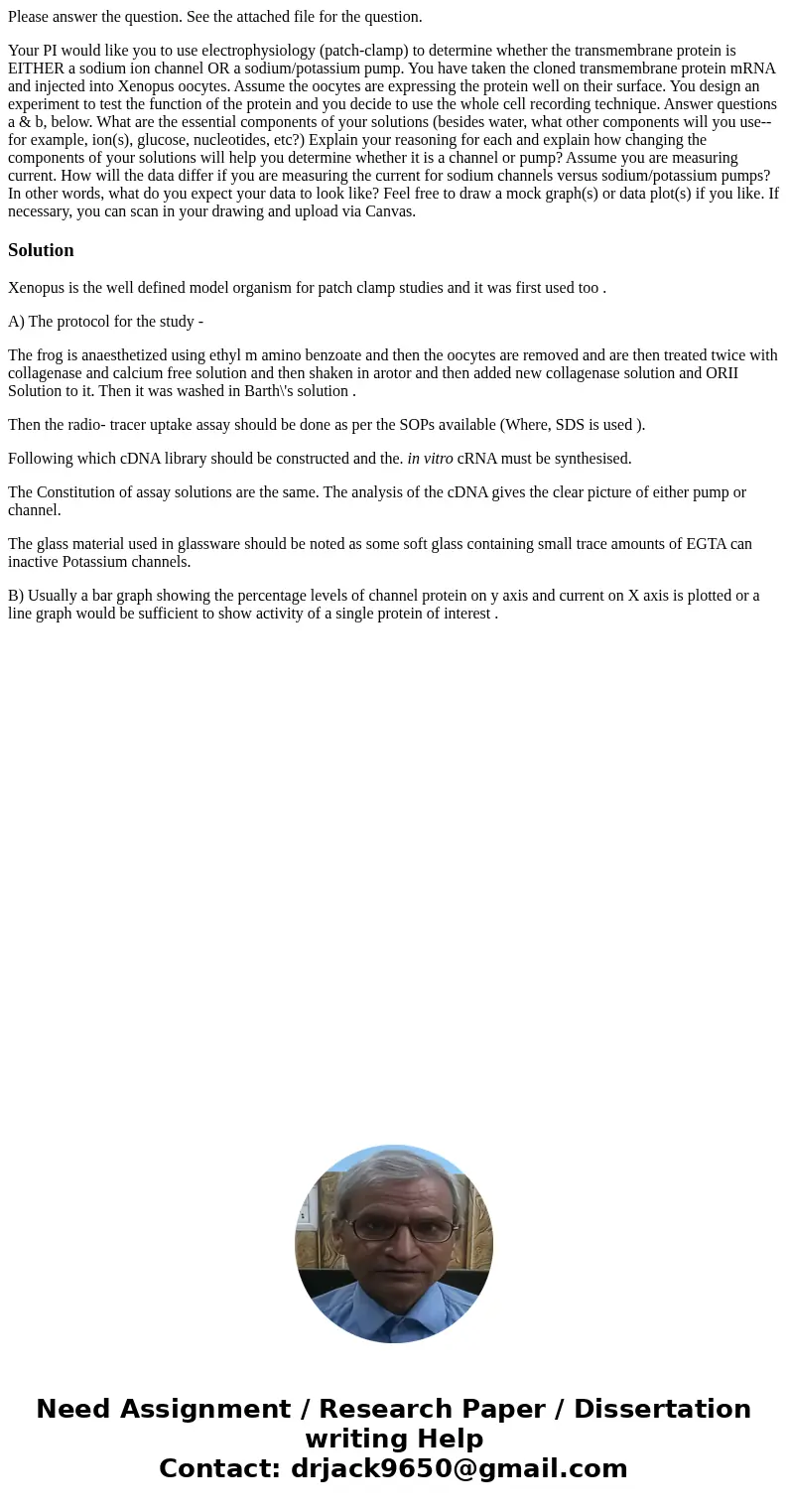Please answer the question See the attached file for the que
Please answer the question. See the attached file for the question.
Your PI would like you to use electrophysiology (patch-clamp) to determine whether the transmembrane protein is EITHER a sodium ion channel OR a sodium/potassium pump. You have taken the cloned transmembrane protein mRNA and injected into Xenopus oocytes. Assume the oocytes are expressing the protein well on their surface. You design an experiment to test the function of the protein and you decide to use the whole cell recording technique. Answer questions a & b, below. What are the essential components of your solutions (besides water, what other components will you use--for example, ion(s), glucose, nucleotides, etc?) Explain your reasoning for each and explain how changing the components of your solutions will help you determine whether it is a channel or pump? Assume you are measuring current. How will the data differ if you are measuring the current for sodium channels versus sodium/potassium pumps? In other words, what do you expect your data to look like? Feel free to draw a mock graph(s) or data plot(s) if you like. If necessary, you can scan in your drawing and upload via Canvas.Solution
Xenopus is the well defined model organism for patch clamp studies and it was first used too .
A) The protocol for the study -
The frog is anaesthetized using ethyl m amino benzoate and then the oocytes are removed and are then treated twice with collagenase and calcium free solution and then shaken in arotor and then added new collagenase solution and ORII Solution to it. Then it was washed in Barth\'s solution .
Then the radio- tracer uptake assay should be done as per the SOPs available (Where, SDS is used ).
Following which cDNA library should be constructed and the. in vitro cRNA must be synthesised.
The Constitution of assay solutions are the same. The analysis of the cDNA gives the clear picture of either pump or channel.
The glass material used in glassware should be noted as some soft glass containing small trace amounts of EGTA can inactive Potassium channels.
B) Usually a bar graph showing the percentage levels of channel protein on y axis and current on X axis is plotted or a line graph would be sufficient to show activity of a single protein of interest .

 Homework Sourse
Homework Sourse